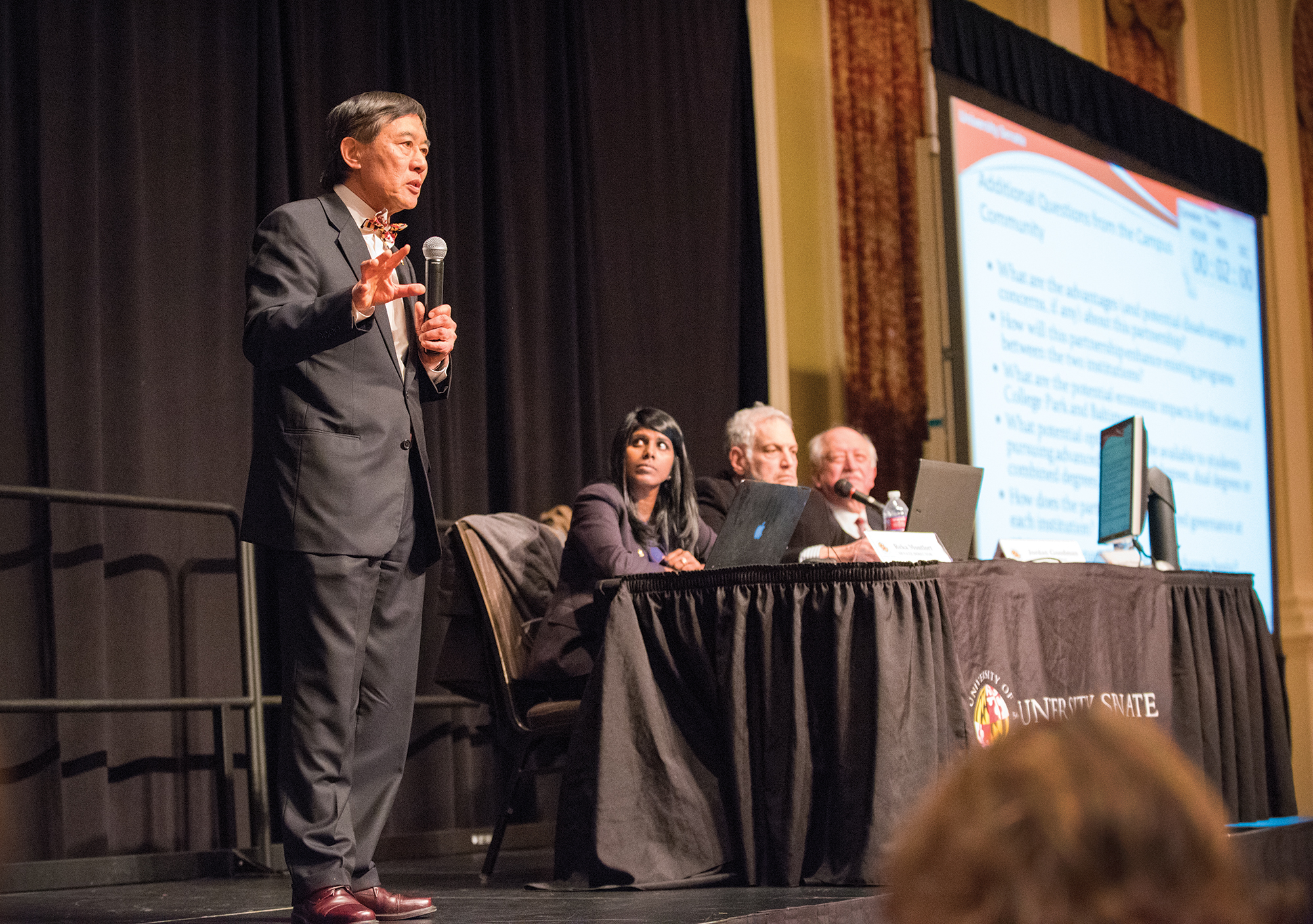Since the University of Maryland and the University of Maryland, Baltimore united under the MPowering the State initiative in 2012, they have partnered to create several programs for nursing students, human trafficking survivors, biomedical researchers and more.
The agreement brought the two universities together to establish joint programs enhancing their educational, research and entrepreneurial capacities. In 2016, the Maryland General Assembly signed the agreement into law through The University of Maryland Strategic Partnership Act.
“We both were very research-intensive universities, both having about half a billion dollars a year in extramural funding like the [National Institutes of Health] and [National Science Foundation],” said Bruce Jarrell, UMB’s senior vice president. “Both of us were strong, and the question is, how much stronger can we get if we put things together that we haven’t been putting together before?”
Mary Ann Rankin, this university’s provost, said both people on campus and in the legislature “regretted” that the universities didn’t have a stronger relationship in the past.
[Read more: Strategic partnership between UMD, University of Maryland, Baltimore takes effect today]
When MPowering the State first started, Rankin said, the steering committee requested funds from the state to create more “obvious” collaborations between the universities. These opportunities included the Center for Health-Related Informatics and Bioimaging, a joint effort combining computing and biomedical resources from both campuses, and the School of Nursing 2+2 Program, in which this university’s students complete two years of prerequisite classes for a nursing degree, then complete their degree in another two years at UMB.
Since the inception of the universities’ partnership, Rankin said, the programs and initiatives have branched out into less obvious collaborations, such as the SAFE Center for Human Trafficking Survivors. The center provides medical care through UMB’s nursing school and mental health treatment through this university’s psychology clinics.
Another partnership effort, UM Ventures, combines the entrepreneurial connections of both campuses and focuses on bringing university innovations into the marketplace. A report from MPowering the State said “the number of startups created quadrupled in the past five years, and doubled from fiscal year 2015 to 2016.” Joint programs and initiatives also allow both campuses to work together to earn funding from sources outside the university system, such as the NIH, NSF or Department of Defense.
[Read more: UMD and UMB officials to announce national security partnership next week in Greenbelt]
The latest collaboration between the universities through the MPowering the State initiative is the Center for Sports Medicine, Health and Human Performance at Cole Field House. The center, set to open in 2019, will include both an orthopedic surgery clinic and a center researching traumatic brain injuries.
In February 2016, when the University of Maryland Strategic Partnership Act was introduced to the Maryland Senate, university President Wallace Loh released a statement regarding the proposed bill. During the nearly four years the MPowering the State agreement operated while not under state law, “some 60 joint faculty appointments resulting in over $70M in research awards” resulted from the partnership, but “the potential is even greater,” Loh wrote.
When the bill was made into law, Rankin said, the partnership between the two campuses became closer and more focused than it was before they were legally mandated to work together and send reports on their progress. While the universities have come together legally, there are currently no plans to merge the two campuses.
A four-person joint steering committee, of which both Jarrell and Rankin are members, influences which proposed programs and initiatives will receive funding through MPowering the State, but it leaves the operation of the programs up to the faculty members brought together by the programs, Jarrell said. The council looks for proposals that take advantage of complementary programs between the universities — such as the MLaw program, which is jointly taught by UMD and UMB faculty — rather than trying to combine overlapping and competing programs.
Rankin said the steering council received a new round of proposals from deans of the respective schools Thursday, and will be voting on which ideas should be implemented soon.
“I expect these proposals that we got today to be full of wonderful ideas,” she said. “I know they will be.”



